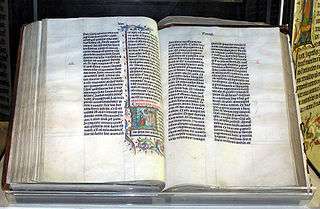Restorationism
Restorationism (or Christian primitivism) is the belief that Christianity has been or should be restored along the lines of what is known about the apostolic early church, which restorationists see as the search for a purer and more ancient form of the religion.[1][2][3] Fundamentally, "this vision seeks to correct faults or deficiencies (in the church) by appealing to the primitive church as a normative model."[1]:635
Efforts to restore an earlier, purer form of Christianity are often a response to denominationalism. As Rubel Shelly put it, the "motive behind all restoration movements is to tear down the walls of separation by a return to the practice of the original, essential and universal features of the Christian religion."[4]:29 Different groups have tried to implement the restorationist vision in a variety of ways; for instance, some have focused on the structure and practice of the church, others on the ethical life of the church, and others on the direct experience of the Holy Spirit in the life of the believer.[1]:635–638 The relative importance given to the restoration ideal, and the extent to which the full restoration of the early church is believed to have been achieved, also varies among groups.
In comparable terms, earlier primitivist movements, including the Hussites,[5]:13 Anabaptists,[5]:125–135 Landmarkists,[5]:69–71 Puritans,[5]:50–55 and Waldensians have been described as examples of restorationism, as have many seventh-day Sabbatarians. For Anabaptists, restoration primarily meant to relive in a studied fashion the life of the New Testament.[6] Landmarkism (often identified with Baptist Successionism) is more properly a theory of the continuation of the pure Church through the centuries, recognizable by certain key doctrines, primarily believer's baptism. Many groups have attempted a history of their movement and an ecclesiology that falls somewhere in between the two ideas of Restorationism and Successionism.
The term "restorationism" is sometimes used more specifically as a synonym for the American Restoration Movement.[2]:225–226 The term is also used by more recent groups, describing their goal to re-establish Christianity in its original form, such as some anti-denominational Charismatic Restorationists, which arose in the 1970s in the United Kingdom and elsewhere.[7][8]
Uses of the term
The terms restorationism, restorationist and restoration are used in several senses within Christianity. "Restorationism" in the sense of "Christian primitivism" refers to the attempt to correct perceived shortcomings of the current church by using the primitive church as a model to reconstruct early Christianity,[1]:635 and has also been described as "practicing church the way it is perceived to have been done in the New Testament".[2]:217 Restorationism is called "apostolic" as representing the form of Christianity that the twelve Apostles followed. These themes arise early in church history, first appearing in the works of Iranaeus,[1]:635 and appeared in some movements during the Middle Ages. It was expressed to varying degrees in the theology of the Protestant Reformation,[2]:217 and Protestantism has been described as "a form of Christian restorationism, though some of its forms – for example the Churches of Christ or the Baptists – are more restorationist than others".[9]:81–82 A number of historical movements within Christianity may be described as "restoration movements", including the Glasites in Scotland and England, the independent church led by James Haldane and Robert Haldane in Scotland, the American Restoration Movement, the Landmark Baptists and the Mormons.[10]:659pf A variety of more contemporary movements have also been described as "restorationist".[11][12] Restorationism has been described as a basic component of some Pentecostal movements such as the Assemblies of God.[13]:4–5 The terms "Restorationism movement" and "Restorationist movement" have also been applied to the British New Church Movement.[14]:82–83
Capitalized, the term is also used as a synonym for the American Restoration Movement.[2]:225–226[15]
The term "restorationism" can also include the belief that the Jewish people must be restored to the promised land in fulfillment of biblical prophecy before the Second Coming of Christ.[16]:3 Christian restorationism is generally used to describe the 19th century movement based on this belief, though the term Christian Zionism is more commonly used to describe later forms.
"Restorationism" is also used to describe a form of postmillennialism developed during the later half of the 20th century, which was influential among a number of charismatic groups and the British new church movement.[17]:57–58
The term primitive,[18] in contrast with other uses, refers to a basis in scholarship and research into the actual writings of the church fathers and other historical documents. Since written documents for the underground first-century church are sparse, the primitive church passed down its knowledge verbally. Elements of the primitive Christianity movement reject the patristic tradition of the prolific extrabiblical 2nd- and 3rd-century redaction of this knowledge (the Ante-Nicene Fathers), and instead attempt to reconstruct primitive church practices as they might have existed in the Apostolic Age. To do this, they revive practices found in the Old Testament.
The term apostolic[19] refers to a nonmainstream, often literal, apostolic succession or historical lineage tracing back to the Apostles and the Great Commission. These restorationist threads are sometimes regarded critically as being Judaizers in the Ebionite tradition.
Historical models
The restoration ideal has been interpreted and applied in a variety of ways.[1]:635 Four general historical models can be identified based on the aspect of early Christianity that the individuals and groups involved were attempting to restore.[1]:635 These are:
- Ecclesiastical Primitivism;[1]:635
- Ethical Primitivism;[1]:635
- Experiential Primitivism;[1]:635 and
- Gospel Primitivism.[1]:635
Ecclesiastical primitivism focuses on restoring the ecclesiastical practices of the early church.[1]:635 Huldrych Zwingli, John Calvin and the Puritans all advocated ecclesiastical primitivism.[1]:635, 636 The strongest advocate of ecclesiastical primitivism in the United States was Alexander Campbell.[1]:636
Ethical primitivism focuses on restoring the ethical norms and commitment to discipleship of the early church.[1]:636 The Anabaptists, Barton W. Stone and the Holiness Movement are examples of this form of restorationism.[1]:636, 637 The movement often requires observance of universal commandments, such as a biblical Sabbath as given to Adam and Eve in the Garden of Eden, and the Hebrew calendar to define years, seasons, weeks, and days. Circumcision, animal sacrifices, and ceremonial requirements, as practiced in Judaism, are distinguished from the Ten Commandments, Noahide laws[20] and High Sabbaths[21] as given to, and in effect for, all humanity. The Sermon on the Mount and particularly the Expounding of the Law warn against antinomianism, the rejection of biblical teachings concerning observance of the Law.[22]
Experiential primitivism focuses on restoring the direct communication with God and the experience of the Holy Spirit seen in the early church.[1]:637 Examples include the Latter Day Saint movement of Joseph Smith and Pentecostalism.[1]:637, 638
Gospel primitivism may be best seen in the theology of Martin Luther.[1]:638 Luther was not, in the strictest sense, a restorationist because he saw human effort to restore the church as works righteousness and was sharply critical of other Reformation leaders who were attempting to do so.[1]:638 On the other hand, he was convinced that the gospel message had been obscured by the Roman Catholic Church of the time.[1]:638 He also rejected church traditions and insisted on scripture as the sole authority for the church.[5]:23
These models are not mutually exclusive, but overlap; for example, the Pentecostal movement sees a clear link between ethical primitivism and experiential primitivism.[1]:635, 637
Middle Ages
Beginning in about 1470 a succession of Popes focused on the acquisition of money, their role in Italian politics as rulers of the papal states and power politics within the college of cardinals.[23] Restorationism[24] at the time was centered on movements that wanted to renew the church, such as the Lollards, the Brethren of the Common Life[25], the Hussites, and Girolamo Savonarola's reforms in Florence.[26]
While these pre-reformation movements did presage and sometimes discussed a break with Rome and papal authority, they also provoked restorationist movements within the church, such as the councils of Constance [27] and Basle,[28] which were held in the first half of the 15th century.
Preachers at the time regularly harangued delegates to these conferences regarding simony, venality, lack of chastity and celibacy, and the holding of multiple benefices.[29] The lack of success of the restorationist movements led, arguably, to the Protestant Reformation.[23]
Protestant Reformation

The Protestant Reformation came about through an impulse to repair the Church and return it to what the reformers saw as its original biblical structure, belief, and practice,[30] and was motivated by a sense that "the medieval church had allowed its traditions to clutter the way to God with fees and human regulations and thus to subvert the gospel of Christ."[5]:21 At the heart of the Reformation was an emphasis on the principle of "scripture alone" (sola scriptura).[5]:22–23 As a result, the authority of church tradition, which had taken practical precedence over scripture, was rejected.[5]:22
The Reformation was not a monolithic movement, but consisted of at least three identifiable sub-currents.[5]:21 One was centered in Germany, one was centered in Switzerland, and the third was centered in England.[5]:21 While these movements shared some common concerns, each had its own particular emphasis.[5]:21 The Lutheran approach can be described as one of "reformation," seeking "to reform and purify the historic, institutional church while at the same time preserving as much of the tradition as possible."[5]:21 In contrast, the Reformed approach can be described as one of "restoration," seeking "to restore the essence and form of the primitive church based on biblical precedent and example; tradition received scant respect."[5]:21 While Luther focused on the question "How can we find forgiveness of sins?", the early Reformed theologians turned to the Bible for patterns that could be used to replace traditional forms and practices.[5]:24 Heinrich Bullinger and Martin Bucer in particular emphasized the restoration of biblical patterns.[5]:29–31 John Calvin reflected an intermediate position between that of Luther and Reformed theologians such as Zwingli, stressing biblical precedents for church governance, but as a tool to more effectively proclaim the gospel rather than as ends in themselves.[5]:291,22
Luther opposed efforts to restore "biblical forms and structures,"[5]:112 because he saw human efforts to restore the church as works righteousness.[1]:638 He did seek the "marks of the true church," but was concerned that by focusing on forms and patterns could lead to the belief that by "restoring outward forms alone one has restored the essence."[5]:117 Thus, Luther believed that restoring the gospel was the first step in renewing the church, rather than restoring biblical forms and patterns.[5]:118 In this sense, Luther can be described as a gospel restorationist, even though his approach was very different from that of other restorationists.[1]:638[5]:121
Protestant groups have generally accepted history as having some "jurisdiction" in Christian faith and life; the question has been the extent of that jurisdiction.[31]:5 A commitment to history and primitivism are not mutually exclusive; while some groups attempt to give full jurisdiction to the primitive church, for others the apostolic "first times" are given only partial jurisdiction.[31]:5,6
First Great Awakening
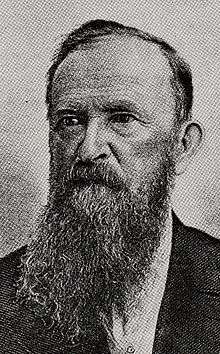
During the First Great Awakening, a movement developed among the Baptists known as Separate Baptists. Two themes of this movement were the rejection of creeds and "freedom in the Spirit."[5]:65 The Separate Baptists saw scripture as the "perfect rule" for the church.[5]:66 However, while they turned to the Bible for a structural pattern for the church, they did not insist on complete agreement on the details of that pattern.[5]:67 This group originated in New England, but was especially strong in the South where the emphasis on a biblical pattern for the church grew stronger.[5]:67 In the last half of the 18th century it spread to the western frontier of Kentucky and Tennessee, where the Stone and Campbell movements would later take root.[5]:68 The development of the Separate Baptists in the southern frontier helped prepare the ground for the Restoration Movement, as the membership of both the Stone and Campbell groups drew heavily from among the ranks of the Separate Baptists.[5]:67 Separate Baptist restorationism also contributed to the development of the Landmark Baptists in the same area at about the same time as the Stone-Campbell Restoration Movement. Under the leadership of James Robinson Graves, this group looked for a precise blueprint for the primitive church, believing that any deviation from that blueprint would keep one from being part of the true church.[5]:68
Groups arising during the Second Great Awakening
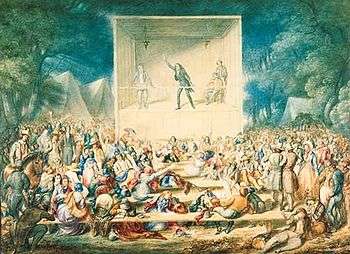
The ideal of restoring a "primitive" form of Christianity grew in popularity in the United States after the American Revolution.[5]:89–94 This desire to restore a purer form of Christianity played a role in the development of many groups during this period, known as the Second Great Awakening, including the Mormons, Baptists and Shakers.[5]:89 Several factors made the restoration sentiment particularly appealing during this time period.[5]:90–94
- To immigrants in the early 19th century, the land in America seemed pristine, edenic and undefiled - "the perfect place to recover pure, uncorrupted and original Christianity" - and the tradition-bound European churches seemed out of place in this new setting.[5]:90
- The new American democracy seemed equally fresh and pure, a restoration of the kind of just government that God intended.[5]:90,91
- Many believed that the new nation would usher in a new millennial age.[5]:91,92
- Independence from the traditional churches of Europe was appealing to many Americans who were enjoying a new political independence.[5]:92,93
- A primitive faith based on the Bible alone promised a way to sidestep the competing claims of all the many denominations available and find assurance of being right without the security of an established national church.[5]:93
Camp meetings fueled the Second Great Awakening, which served as an "organizing process" that created "a religious and educational infrastructure" across the trans-Appalachian frontier that encompassed social networks, a religious journalism that provided mass communication, and church related colleges.[32]:368
American Stone-Campbell Restoration Movement

The American Restoration Movement aimed to restore the church and sought "the unification of all Christians in a single body patterned after the church of the New Testament."[4]:54 While the Restoration Movement developed from several independent efforts to go back to apostolic Christianity, two groups that independently developed similar approaches to the Christian faith were particularly important to its development.[33]:27–32 The first, led by Barton W. Stone began at Cane Ridge, Bourbon County, Kentucky and called themselves simply Christians. The second began in western Pennsylvania and Virginia (now West Virginia) and was led by Thomas Campbell and his son, Alexander Campbell; they used the name Disciples of Christ.
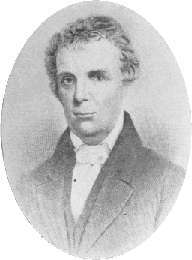
The Campbell movement was characterized by a "systematic and rational reconstruction" of the early church, in contrast to the Stone movement which was characterized by radical freedom and lack of dogma.[5]:106–108 Despite their differences, the two movements agreed on several critical issues.[5]:108 Both saw restoring apostolic Christianity as a means of hastening the millennium.[5]:108 Both also saw restoring the early church as a route to Christian freedom.[5]:108 And, both believed that unity among Christians could be achieved by using apostolic Christianity as a model.[5]:108 They were united, among other things, in the belief that Jesus is the Christ, the Son of God; that Christians should celebrate the Lord's Supper on the first day of each week; and that baptism of adult believers by immersion in water is a necessary condition for salvation. Because the founders wanted to abandon all denominational labels, they used the biblical names for the followers of Jesus that they found in the Bible.[34]:27 The commitment of both movements to restoring the early church and to uniting Christians was enough to motivate a union between many in the two movements.[35]:8,9
With the merger, there was the challenge of what to call the new movement. Clearly, finding a biblical, non-sectarian name was important. Stone wanted to continue to use the name "Christians." Alexander Campbell insisted upon "Disciples of Christ". As a result, both names were used.[34]:27–28[36]:125

The Restoration Movement began during, and was greatly influenced by, the Second Great Awakening.[32]:368 While the Campbells resisted what they saw as the spiritual manipulation of the camp meetings, the Southern phase of the Awakening "was an important matrix of Barton Stone's reform movement" and shaped the evangelistic techniques used by both Stone and the Campbells.[32]:368
The Restoration Movement has seen several divisions, resulting in multiple separate groups. Three modern groups originating in the U.S. claim the Stone-Campbell movement as their roots: Churches of Christ, Christian churches and churches of Christ, and the Christian Church (Disciples of Christ). Some see divisions in the movement as the result of the tension between the goals of restoration and ecumenism, with the churches of Christ and the Christian churches and churches of Christ resolving the tension by stressing restoration while the Christian Church (Disciples of Christ) resolved the tension by stressing ecumenism.[37]:383 Non-U.S. churches associated with this movement include the Churches of Christ in Australia and the Evangelical Christian Church in Canada.[38][39]
Christadelphians
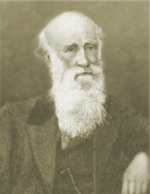
Dr. John Thomas (April 12, 1805 – March 5, 1871), was a devout convert to the Restoration Movement after a shipwreck at sea on his emigration to America brought to focus his inadequate understanding of the Bible, and what would happen to him at death. This awareness caused him to devote his life to the study of the Bible and he promoted interpretations of it which were at variance with the mainstream Christian views the Restoration Movement held. In particular he questioned the nature of man. He held a number of debates with one of the leaders of the movement, Alexander Campbell, on these topics but eventually agreed to stop because he found the practice bestowed no further practical merits to his personal beliefs and it had the potential to create division. He later determined that salvation was dependent upon having the theology he had developed for baptism to be effective for salvation and published an "Confession and Abjuration" of his previous position on March 3, 1847. He was also rebaptised.
Following his abjuration and rebaptism he went to England on a preaching tour in June 1848 including Reformation Movement churches,[40] Although his abjuration and his disfellowship in America were reported in the British churches magazines[41] certain churches in the movement still allowed him to present his views. Thomas also gained a hearing in Unitarian and Adventist churches through his promotion of the concept of "independence of thought" with regards to interpreting the Bible.
Through a process of creed setting and division the Christadelphian movement emerged with a distinctive set of doctrines incorporating Adventism, anti-trinitarianism, the belief that God is a "substantial and corporeal" being, objection to military service, a lay-membership with full participation by all members, and other doctrines consistent with the spirit of the Restorationist movement.[42]
One consequence of objection to military service was the adoption of the name Christadelphians to distinguish this small community of believers and to be granted exemption from military service in the American Civil War.[42]
Latter Day Saint movement

Adherents to the Latter Day Saint movement believe that founder Joseph Smith was a prophet of God, chosen to restore the primitive, apostolic church established by Jesus. Like other restorationist groups, members believe that the church and priesthood established by Jesus were withdrawn from the Earth after the end of the apostolic age and before the First Council of Nicaea in 325. Unlike other reformers, who based their movements on intensive study of the Bible, Smith claimed a restoration of revelation and apostolic authority.[43] According to Allen and Hughes, "[n]o group used the language of 'restoration' more consistently and more effectively than did the [Latter Day Saints] ... early Mormons seemed obsessed with restoring the ancient church of God."[5]:94
According to Smith, God appeared to him in 1820, instructing him that the creeds of the churches of the day were corrupted.[44] In addition to restoring the primitive church, Smith claimed to receive entirely new revelations. In 1830, he published The Book of Mormon, which Mormons believe he translated through divine means from the Golden Plates he obtained from an angel. The largest and most well known church in the Latter Day Saint movement is The Church of Jesus Christ of Latter-day Saints (LDS Church), followed by Community of Christ (formerly RLDS), and hundreds of other denominations. Members of the LDS Church believe that, in addition to Smith being the first prophet appointed by Jesus in the "latter days", every subsequent apostle and church president also serves in the capacity of prophet, seer and revelator.
Some among the Churches of Christ have attributed the restorationist character of the Latter Day Saints movement to the influence of Sidney Rigdon, who was associated with the Campbell movement in Ohio but left it and became a close friend of Joseph Smith.[5]:95[45]:544,545 Neither the Mormons nor the early Restoration Movement leaders invented the idea of "restoration"; it was a popular theme of the time that had developed independently of both, and Mormonism and the Restoration Movement represent different expressions of that common theme.[5]:95[45]:544,545 The two groups had very different approaches to the restoration ideal.[45]:545 The Campbell movement combined it with Enlightenment rationalism, "precluding emotionalism, spiritualism, or any other phenomena that could not be sustained by rational appeals to the biblical text."[45]:545 The Latter Day Saints combined it with "the spirit of nineteenth-century Romanticism" and, as a result, "never sought to recover the forms and structures of the ancient church as ends in themselves" but "sought to restore the golden age, recorded in both Old Testament and New Testament, when God broke into human history and communed directly with humankind."[45]:545 Mormons gave priority to current revelation. Primitive observances of "appointed times" like Sabbath were secondary to continuing revelation, similarly to the progressive revelation held by some non-restorationist Christian theologians.
The Mormon doctrine of the "Great Apostasy" has been criticized as heresy by some Christians, primarily Catholics , as inconsistent with what they claim is biblical teaching that the true church was never lost at any time. Mormons in turn point to historical evidence of changes in Christian doctrine over time, scriptures prophesying of a coming apostasy before the last days (particularly 2 Thessalonians 2:1-3, 2 Timothy 4:3-4 and Amos 8:11-12) and corruption within the Catholic Church that led to the necessity of the Protestant Reformation, which is seen as an important step towards the Restoration.[46]
Adventism
Adventism is a Christian eschatological belief that looks for the imminent Second Coming of Jesus to inaugurate the Kingdom of God. This view involves the belief that Jesus will return to receive those who have died in Christ and those who are awaiting his return, and that they must be ready when he returns. Adventists are considered to be both restorationists and conservative Protestants.[47][48]
Millerites and Sabbatarianism
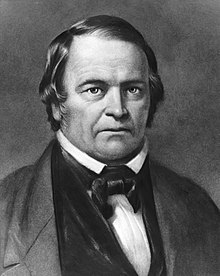
The Millerites were the most well-known family of the Adventist movements. They emphasized apocalyptic teachings anticipating the end of the world, and did not look for the unity of Christendom but busied themselves in preparation for Christ's return. Millerites sought to restore a prophetic immediacy and uncompromising biblicism that they believed had once existed but had long been rejected by mainstream Protestant and Catholic churches. From the Millerites descended the Seventh-day Adventists and the Advent Christian Church.
Seventh-day Adventists
The Seventh-day Adventist Church grew out of the Adventist movement, in particular the Millerites. The Seventh-day Adventist Church is the largest of several Adventist groups which arose from the Millerite movement of the 1840s in upstate New York, a phase of the Second Great Awakening. Important to the Seventh-day Adventist movement is a belief in progressive revelation,[49] teaching that the Christian life and testimony is intended to be typified by the Spirit of Prophecy, as explained in the writings of Ellen G. White.
Much of the theology of the Seventh-day Adventist Church corresponds to Protestant Christian teachings such as the Trinity and the infallibility of Scripture. Distinctive teachings include the unconscious state of the dead and the doctrine of an investigative judgment. The church is also known for its emphasis on diet and health, its holistic understanding of the person, its promotion of religious liberty, and its conservative principles and lifestyle.
Worldwide Church of God
The Worldwide Church of God arose from the Seventh Day churches. The personal ministry of Herbert W. Armstrong became the Radio Church of God, which became the Worldwide Church of God. It later splintered into many other churches and groups when the Worldwide Church of God disassociated itself with the Restoration movements and made major attempts to join the Protestant branch of Christianity. The largest of these groups, the Living Church of God and the United Church of God, continue in the tradition of the Worldwide Church of God as it was under the leadership of Herbert W. Armstrong.
Advent Christian Church
The Advent Christian Church is unaffiliated with Seventh-day Adventism, but considers itself the second "of six Christian denominations that grew out of the ministry of William Miller".[50] As a "first-day" body of Adventist Christians established by The Advent Christian General Conference in 1860, the church's beliefs include "conditional immortality" and a form of "soul sleep".
Advent Christians such as George Storrs and Jonas Wendell influenced the Bible Student movement.
Other groups originating in the nineteenth century
Bible Students
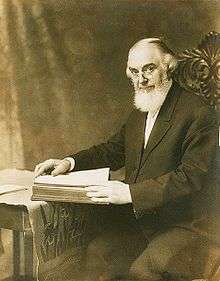
In the 1870s, a Bible study group led by Charles Taze Russell formed into what was eventually called the Bible Student movement. Russell's congregations did not consider him to be the founder of a new religion,[51] but that he helped in restoring true Christianity from the apostasy that Jesus and the Apostle Paul foretold. They believed that other Churches departed in a Great Apostasy from the original faith on major points, and that the original faith could be restored through a generally literal interpretation of the Bible and a sincere commitment to follow its teachings. They focused on several key doctrinal points that they considered a return to "primitive Christianity",[52] derived from their interpretation of the Bible, including a rejection of trinitarianism, the immortality of the soul, and the definition of Hell as a place of eternal torment;[53] active proselytization; strict neutrality in political affairs;[54] abstinence from warfare;[55] and a belief in the imminent manifestation of the Kingdom of God (or World to Come) on Earth.
Jehovah's Witnesses
Jehovah's Witnesses emerged as a distinct religious organization, maintaining control of Russell's Watch Tower Bible and Tract Society and other corporations. They continued to develop doctrines that they considered to be an improved restoration of first century Christianity, including increased emphasis on the use of Jehovah as God's personal name.[56]
Plymouth Brethren
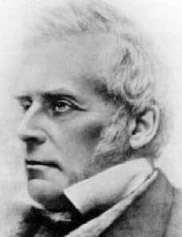
The Plymouth Brethren is a conservative, Evangelical, restorationist movement whose origin can be traced to Dublin, Ireland, in 1827.[57][58][59] The title, "The Brethren", is one that many of their number are comfortable with, in that the Bible designates all believers as "brethren".
The first English assembly was in Plymouth in 1831[60] where the movement became well known and assemblies diffused throughout Europe and beyond.[61] It was organised primarily by George Wigram, Benjamin Wills Newton and John Nelson Darby.[62] The movement soon spread throughout the UK. By 1845, the first English assembly in Plymouth had over 1,000 souls in fellowship.[63] They became known as "the brethren from Plymouth", and were soon simply called "Plymouth Brethren."
By 1848, divergence of practice and belief led to the development of two separate branches. The rift was caused primarily by a difference of opinions between John Nelson Darby and Benjamin Wills Newton in regards to eschatology. Despite more divisions, assemblies are still often generalized into two main categories: "Open Brethren" and "Exclusive Brethren".[64]
John Duncan criticized the Brethren movement saying "To end sectarianism, the Plymouth Brethren began by making a new sect, and that sect, of all sects, the most sectarian".[65]
20th-century and contemporary groups
Pentecostalism
Pentecostalism began primarily as a restoration movement that focused on the "experiential" aspect of the early church.[66] The early pioneers of the Pentecostal movement sought to restore the work and power of the Holy Spirit to the church, which they felt had been lost early on after the Apostolic Age. Oneness Pentecostals, in particular, continue to have a lot of restorationist themes present in their movement. Many Oneness Pentecostals see their movement as being a restoration of the Apostolic Church, which is why many of them refer to themselves as "apostolic" or to their movement as the "Apostolic Pentecostal" movement.
Charismatic Movement
British New Church Movement
During the Charismatic Movement of the 1960s and 1970s, which focused on the transformation of the individual, some leaders formed what has become known as the Charismatic Restorationist Movement. These leaders, of whom Arthur Wallis, David Lillie and Cecil Cousen were at the forefront, focused on the nature of the church and shared a distinctive view that authentic church order was being restored to the whole church. This authentic church order centred on what is referred to as the "fivefold ministries", as listed in Ephesians 4:11: Apostles, Prophets, Evangelists, Teachers and Pastors. Although the Charismatic Movement brought the Pentecostal gifts to the denominational churches, these restorationists considered denominationalism unbiblical, and shared a conviction that God would cause the church to be directly organized and empowered by the holy spirit.
The movement has thousands of adherents worldwide, and notable church networks include Newfrontiers led by Terry Virgo, Salt and Light Ministries International led by Barney Coombs and Ichthus Christian Fellowship led by Faith and Roger Forster.
Shepherding Movement
The British leaders of charismatic restorationism mutually recognised a parallel movement in the United States, centered on the Fort Lauderdale Five; Derek Prince, Don Basham, Bob Mumford, Charles Simpson and Ern Baxter. This movement became known as the Shepherding Movement and was the subject of significant controversy in the mid-1970s. The movement left a significant legacy through its influence on contemporary ministries International Churches of Christ, Maranatha Campus Ministries and Great Commission International.
Apostolic-Prophetic Movement
More recently another form of charismatic restorationism with a similar recognition of the apostolic office has emerged in the form of the Apostolic-Prophetic Movement, centered on the Kansas City Prophets. Leading proponents of the movement include C. Peter Wagner, Rick Joyner, Mike Bickle and Lou Engle.
Church of God (Restoration)
The Church of God (Restoration) is a Christian denomination that was founded in the 1980s by Daniel (Danny) Layne.[67] In a booklet written by Layne in the early 1980s, he claimed to be an ex-heroin addict who spent years dealing drugs and living a life of crime and sin on the streets of San Francisco. Layne was originally raised in the Church of God (Anderson), where his father was a minister. Layne began preaching in the Church of God (Guthrie, OK) after his conversion.
One tenet of this group is that they are ordained by both prophecy and divine command to restore the church of God as it was in the Book of Acts.[68] Most of Daniel Layne's beliefs concerning the book of Revelation originated from some ministers who had left the Church of God (Anderson) reformation movement thirty or so years earlier. This teaching is upheld by the official eschatology, which is a form of church historicism. This Church of God (Restoration)[69] teaches that the 7th Trumpet in the book of the Revelation began to sound around the year 1980 when Daniel Layne was saved, alleging that there was a general discontent among many of its current adherents that were in various Churches of God at that time. A variation of this "Seventh Seal message"[70] had been taught in other Churches of God for approximately 50 years prior to this point.
Iglesia ni Cristo
Iglesia ni Cristo began in the Philippines and was incorporated by Felix Y. Manalo on July 27, 1914.[71][72] The church professes to be the reestablishment of the original church founded by Jesus Christ and teaches that the original church was apostatized. It does not teach the doctrine of the Trinity or the divinity of Jesus.[73]Iglesia ni Cristo does not subscribe to the term Restoration or claim to be a part of the Restoration Movement.
Local churches
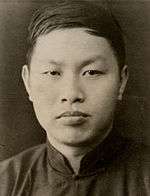
The local churches are a Christian movement influenced by the teachings of J.N. Darby, Watchman Nee and Witness Lee and associated with the Living Stream Ministry publishing house. Its members see themselves as separate from other Christian groups, denominations, and movements, part of what they sometimes call "The Lord's Recovery". One of the defining features of the local churches is their adherence to the principle that all Christians in a city or locality are automatically members of the one church in that locality. Another defining feature is the lack of an official organization or official name for the movement. Those in the local churches believe that to take a name would divide them from other believers. Thus, they often say they meet with "the church in [city name]" with the understanding that they are not the only church but belong to the same church as every believer in their city.[74]
Jesuism
Jesuism is the personal philosophy encompassing the teachings of Jesus of Nazareth and commitment or adherence to those teachings.[75] Jesuism is distinct from and sometimes opposed to mainstream Christianity, the organized religion based on the Christian Bible.[76] In particular, Jesuism is distinguished from the writings attributed to the Apostle Paul and from modern Church doctrine.[77][78] Jesuism is not necessarily critical of the Christian Bible or Church doctrine, but rather it does not affirm their authority over the teachings of Jesus. As a philosophy, Jesuism is characterized as naturalistic and rationalist, rejecting the conflict between faith and science.[79]
See also
- David Bercot
- Christianity in the 1st century
- Christian fundamentalism
- Catholic Apostolic Church
- Constantinian shift
- Latter Day Saint Movement
- The Lord's Recovery
- Members Church of God International
- Messianic Judaism
- Orthodox Church
- Primitive Catholic
- Quakers
- Salafism
- Ressourcement
References
- Douglas Allen Foster and Anthony L. Dunnavant, The Encyclopedia of the Stone-Campbell Movement: Christian Church (Disciples of Christ), Christian Churches/Churches of Christ, Churches of Christ, Wm. B. Eerdmans Publishing, 2004, ISBN 0-8028-3898-7, 9780802838988, entry on Restoration, Historical Models of
- Gerard Mannion and Lewis S. Mudge, The Routledge companion to the Christian church, Routledge, 2008, ISBN 0-415-37420-0, 9780415374200, page 634
- Encyclopedia of Religion in the South, p.665, Samuel S. Hill, Charles H. Lippy, Charles Reagan Wilson, 2005: "An Anabaptist, Servetus believed what has always been basic to restorationism: ... the true, apostolic church .... Restorationists in the South include three churches of the STONE-CAMPBELL TRADITION."
- Rubel Shelly, I Just Want to Be a Christian, 20th Century Christian, Nashville, Tennessee 1984, ISBN 0-89098-021-7
- C. Leonard Allen and Richard T. Hughes, "Discovering Our Roots: The Ancestry of the Churches of Christ," Abilene Christian University Press, 1988, ISBN 0-89112-006-8
- "Charles E. Moore, Radical, Communal, Bearing Witness: The Church as God's Mission in Bruderhof Perspective and Practice". missiodeijournal.com. Retrieved 2018-12-07.
- Evangelicalism in modern Britain: a history from the 1730s to the 1980s, David W. Bebbington, pub 1995, Routledge (UK), ISBN 0-415-10464-5, pg 230,231; 245-249
- Alternative Religions: A Sociological Introduction, Stephen J. Hunt, pub 2003, Ashgate Publishing, Ltd; ISBN 0-7546-3410-8, pg 82,83
- David Lynn Holmes, The faiths of the founding fathers, Oxford University Press US, 2006, ISBN 0-19-530092-0, 9780195300925, 225 pages
- Erwin Fahlbusch and Geoffrey William Bromiley, translated by Geoffrey William Bromiley, The encyclopedia of Christianity, Wm. B. Eerdmans Publishing, 2005, 952 pages, ISBN 0-8028-2416-1, 9780802824165, entry on Restoration Movements
- Max Turner, "Ecclesiology In The Major 'Apostolic' Restorationist Churches In The United Kingdom", Vox Evangelica 19 (1989): 83–108.
- Elaine Milley, "Modern Theology of Restorationism", Archived 2016-04-18 at the Wayback Machine, Master's Thesis, Theological Studies Department, Tyndale College and Seminary
- Edith Waldvogel Blumhofer, Restoring the faith: the Assemblies of God, Pentecostalism, and American culture, University of Illinois Press, 1993, ISBN 0-252-06281-7, 9780252062810, 281 pages
- Stephen Hunt, Alternative religions: a sociological introduction, Ashgate Publishing, Ltd., 2003, ISBN 0-7546-3410-8, 9780754634102, 268 pages
- See for example Cassandra Yacovazzi, "The Crisis of Sectarianism: Restorationist, Catholic, and Mormon Converts in Antebellum America, Masters Thesis, Department of History, Baylor University, May 2009
- Anouar Majid, "The Political Geography of Holiness Archived 2016-02-10 at Wikiwix", American Literary History, April 17, 2009
- Stephen Hunt, Christian millenarianism: from the early church to Waco, Indiana University Press, 2001, ISBN 0-253-21491-2, 9780253214911, 258 pages
- Knight, Alan. Primitive Christianity in Crisis.
- Meredith, Roderick. Restoring Apostolic Christianity.
- E.g., clean and unclean animals, Gen. 7:2.
- E.g., the LORD's cutting covenant with Abraham on Quartodeciman Passover as inferred from Ex. 12:41
- Matt. 5-7
- Tuchman, Barbara W. (1984). The march of folly. New York, U.S.A.: Alfred A. Knopf. ISBN 9780394527772.
- Barbara W. Tuchman (1978). A Distant Mirror. Knopf. ISBN 0-394-40026-7.
- Churchill, Leigh (2004). The Age of Knights & Friars, Popes & Reformers. Milton Keynes: Authentic Media. p. 245. ISBN 978-1-84227-279-4.
- Churchill, Leigh (2004). The Age of Knights & Friars, Popes & Reformers. Milton Keynes: Authentic Media. p. 281. ISBN 978-1-84227-279-4.
- Council of Constance (1414). "Council of Constance". Archived from the original on 2008-01-01. Retrieved 2008-04-08.
- Council of Basle (1431–1449). "Council of Basle". Catholic Encyclopedia 1907. Retrieved 2008-04-08.
- John M. Todd (1971). The Reformation. New York.
- Richard Hooker. "Martin Luther, The Freedom of a Christian". Archived from the original on 2007-03-23. Retrieved 2007-03-08.
- Richard T. Hughes (editor), The American Quest for the Primitive Church, University of Illinois Press, 1988, 292 pages, ISBN 0-252-06029-6
- Douglas Allen Foster and Anthony L. Dunnavant, The Encyclopedia of the Stone-Campbell Movement: Christian Church (Disciples of Christ), Christian Churches/Churches of Christ, Churches of Christ, Wm. B. Eerdmans Publishing, 2004, ISBN 0-8028-3898-7, 9780802838988, 854 pages, entry on Great Awakenings
- Monroe E. Hawley, Redigging the Wells: Seeking Undenominational Christianity, Quality Publications, Abilene, Texas, 1976, ISBN 0-89137-512-0 (paper), ISBN 0-89137-513-9 (cloth)
- McAlister, Lester G. and Tucker, William E. (1975), Journey in Faith: A History of the Christian Church (Disciples of Christ) - St. Louis, Chalice Press, ISBN 978-0-8272-1703-4
- Richard Thomas Hughes and R. L. Roberts, The Churches of Christ, 2nd Edition, Greenwood Publishing Group, 2001, ISBN 0-313-23312-8, 9780313233128, 345 pages
- Douglas Allen Foster and Anthony L. Dunnavant, The Encyclopedia of the Stone-Campbell Movement: Christian Church (Disciples of Christ), Christian Churches/Churches of Christ, Churches of Christ, Wm. B. Eerdmans Publishing, 2004, ISBN 0-8028-3898-7, 9780802838988, 854 pages, entry on Campbell, Alexander
- Leroy Garrett, The Stone-Campbell Movement: The Story of the American Restoration Movement, College Press, 2002, ISBN 0-89900-909-3, 9780899009094, 573 pages
- Sydney E. Ahlstrom, A Religious History of the American People (2004)
- Melton's Encyclopedia of American Religions (2009)
- Encyclopedia of new religions: new religious movements, sects and Christopher Hugh Partridge - 2004 "In June 1848, he returned to England and was well received in Nottingham and had further speaking engagements in Derby"
- The British Millennial Harbinger and Family Magazine ed. James Wallis July 1848 cover, October 1848 in full
- "Our History". Williamsburg Christadelphians. Archived from the original on 2008-05-09. Retrieved 2008-04-03.
- Bushman, Richard (2008). Mormonism: a very short introduction. Oxford University Press. p. 20.
- (See Pearl of Great Price: Joseph Smith - History: Chapter 1:19)
- Douglas Allen Foster and Anthony L. Dunnavant, The Encyclopedia of the Stone-Campbell Movement: Christian Church (Disciples of Christ), Christian Churches/Churches of Christ, Churches of Christ, Wm. B. Eerdmans Publishing, 2004, ISBN 0-8028-3898-7, 9780802838988, 854 pages, entry on Mormonism
- See The Great Apostasy by [James E. Talmage]
- George R. Knight, "A Search for Identity: The Development of Seventh-Day Adventist Beliefs," Review and Herald Pub Assoc., 2000
- "Pew Research Center, America's Changing Religious Landscape, Appendix B: Classification of Protestant Denominations".
- "Seventh-day Adventist Doctrines and Progressive Revelation".
- Midnight and Morning: The Millerite Movement and the Founding of the Advent Christian Church, 1831-1860 by Clyde E. Hewitt (Venture Books, 1984), as cited by "The Advent Christian Church: An Introduction", AreaChurches.com
- Jehovah's Witnesses – Proclaimers of God's Kingdom. chap. 31 p. 707 "A biography of Russell, published shortly after his death, explained: "He was not the founder of a new religion, and never made such claim. He revived the great truths taught by Jesus and the Apostles,"
- "Be Joyful Harvest Workers!". The Watchtower: 11. 15 July 2001.
- Reasoning From The Scriptures. Watchtower. 1988. p. 169.
- "Militarism and Navalism - How Long?" by Charles Taze Russell, Watch Tower, January 1, 1916, page 5, "We see wrongs perpetrated in every direction; Divine Laws entirely set aside by these so-called Christian nations--Christendom. ...God's nation--is in the world, but not of it. Its members cannot be loyal to the prince of this world [Satan], and to the Prince of Glory, both. ...Indeed, we entreat all the Lord's dear people to remember that there are but the two great Masters; and that we have enlisted on the side of our God and His Christ, and are to prove loyal to these in the midst of a crooked and perverse people, blinded by the god of this world and filled with his spirit of pride, boastfulness, animosity, hatred and strife. It should be our desire to be neutral as between these contending factions of Satan's empire. ...Let us never forget our neutrality. Let us be just toward all, kind, generous. Let us avoid as far as possible any discussion of these matters with those who would not be able to understand and appreciate our position."[italics added]Retrieved 2010-12-20
- "Bible Students and the Future", Watch Tower, April 1, 1915, page 101, "In all the Continental Armies our Brethren, known as Bible Students, are to be found--not willingly, but by conscription. ...Before the war we recommended to the Brethren that in the event of hostilities they should, so far as possible, if drafted, request positions in the hospital service or in the supplies department, where they could serve the Government efficiently; whereas, if they were ordered to the firing line, they would not be obliged to shoot to kill. We have reasons for believing that these suggestions are being followed... We have exhorted the brethren to strict neutrality so far as the combatants are concerned, whatever might be their natural inclination through accident of birth or association."Retrieved 2010-12-20
- The Watchtower, April 15, 1983, pg 29, "Why is God's name, Jehovah, missing from most modern translations of the Bible? Superstition that developed among tradition-bound Jews caused them to avoid pronouncing God's personal name, Jehovah. This has contributed to worldwide ignorance regarding the divine name."
- Abigail, Shawn (June 2006). "What is the history of the 'Brethren'?". "Plymouth Brethren" FAQ. Archived from the original on 18 May 2016. Retrieved 12 June 2009.
- Mackay, Harold (1981). Assembly Distinctives. Scarborough, Ontario: Everyday Publications. ISBN 978-0-88873-049-7. OCLC 15948378.
- Bellet, John Gifford; et al. Interesting Reminiscences of the Early History of "Brethren" in and around 1827 (PDF). bruederbewegung.de. Retrieved 12 June 2009.
- Burnham, Jonathan D. (2004). "The Emergence of the Plymouth Brethren". A Story of Conflict: The Controversial Relationship Between Benjamin Wills Newton and John Nelson Darby. Carlisle: Paternoster Press. ISBN 978-1-84227-191-9. OCLC 56336926.
- Neatby, William Blair (1902). A History of the Plymouth Brethren (2nd ed.). London: Hodder and Stoughton. p. 24. OCLC 11627558.
- Livingstone, Elizabeth A. (2000). The Concise Oxford Dictionary of the Christian Church. Oxford: Oxford University Press. ISBN 978-0-19-280057-2. OCLC 46858944.
- Noel, Napoleon (1936). The History of the Brethren. Denver: Knapp. p. 46. OCLC 2807272.
- Steidl, Grant (c. 1988). "Schematic Diagram of Brethren History". Philip H. Van Amerongen. Archived from the original on 7 December 2008. Retrieved 12 June 2009.
- "Welcome". Archived from the original on 2013-02-16.
- Edith Waldvogel Blumhofer, Restoring the Faith: The Assemblies of God, Pentecostalism, and American Culture, University of Illinois Press, USA, 1993, p. 13
- Zion's Voice Archived 2010-07-16 at the Wayback Machine
- "Advanced Bible Search".
- "The Church of God : Official WebsiteHome - The Church of God : Official Website". The Church of God : Official Website.
- "Worshipping Christ" (PDF). Archived from the original (PDF) on 2007-04-22.
- Sanders, Albert J., "An Appraisal of the Iglesia ni Cristo," in Studies in Philippine Church History, ed. Anderson, Gerald H. (Cornell University Press, 1969)
- Tipon, Emmanuel (Jul 28, 2004)."Iglesia Ni Cristo celebrates 90th anniversary". PhilippineNews.com. Retrieved August 19, 2005
- Shepherd, Harvey (July 30, 1994). "Millions mark Church of Christ's 80th anniversary; Founded in the Philippines by Brother Manalo". The Gazette (Montreal). pp. H.7. ProQuest 432675014. (as cited by ProQuest)
- "Local Churches Beliefs". Archived from the original on 2007-12-14.
- Bouck White. The Call of the Carpenter. USA: Doubleday, Page & Company, 1911. p.314.
- Owen J. Flanagan. The Really Hard Problem: Meaning in a Material World. Cambridge: MIT Press, 2007. p.36
- Edgar Dewitt Jones. Paul the Stranger. Abilene: Voice of Jesus, 2003 (online transcription).
- Douglas J. Del Tondo. Jesus' Words Only. San Diego: Infinity Publishing, 2006. p.19
- Owen J. Flanagan. The Really Hard Problem: Meaning in a Material World. Cambridge: MIT Press, 2007. p.263
Further reading
- Birdsall Richard D. "The Second Great Awakening and the New England Social Order." Church History 39 (1970): 345-64.
- Cross, Whitney, R. The Burned-Over District: The Social and Intellectual History of Enthusiastic Religion in Western New York, 1800–1850.
- Zdero, Rad (2004). The Global House Church Movement. Pasadena: William Carey Library Publishers. ISBN 978-0-87808-374-9.
- Zdero, Rad (2007). NEXUS: The World House Church Movement Reader. Pasadena: William Carey Library Publishers. ISBN 978-0-87808-342-8.
- Zdero, Rad (2011). Letters to the House Church Movement: Real Letters, Real People, Real Issues. Xulon Press. ISBN 978-1-61379-022-9.
External links
- The Restoration Movement Pages at the Memorial University of Newfoundland
- Restoration Movements - Kevin Barney, "A Tale of Two Restorations," Foundation for Apologetic Information & Research, a comparison of the LDS restoration movement and the Alexander Campbell restoration movement from a Mormon perspective.
- Mormon Restorationism - Topical Guide to topics related to "restoration" from the Foundation for Apologetic Information & Research
- Publications of Watchman Nee and Witness Lee
